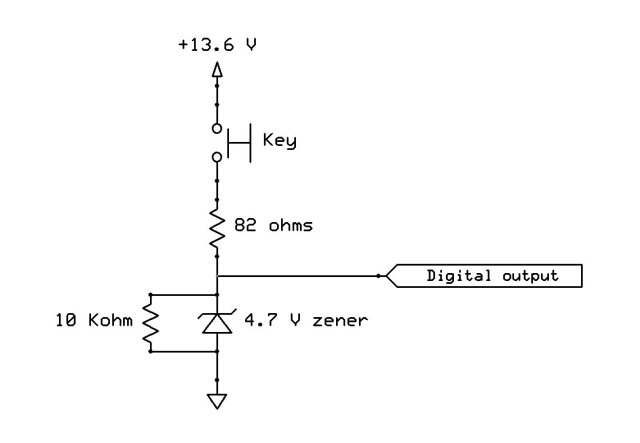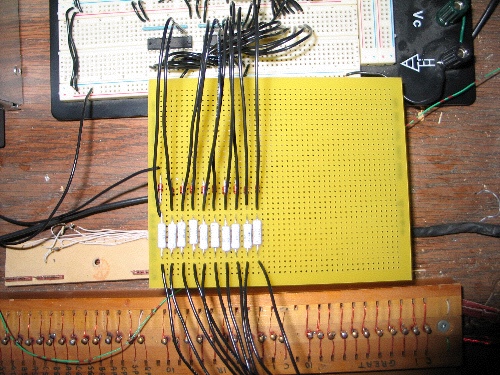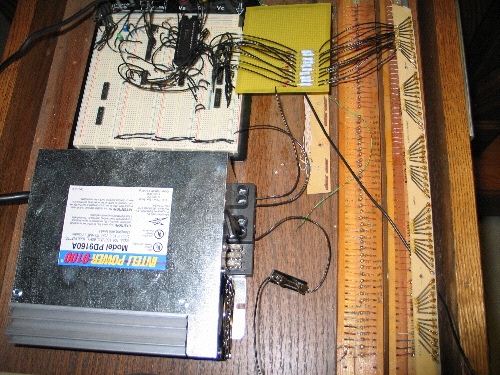I emailed Kimber-Allen to request a catalog and ask about their silver key contacts. Here was the response:
“Our silver keyboard contacts are designed to work at currents up to 1 amp, normally in the range of 0.1 to 0.6 amps They are not suitable for purely electronic switching where the current would only be milliamps; gold contacts should be used in this application.”
Since it’s impractical to switch 100+ mA currents on microsecond timescales (that starts sounding like a radio transmitter!), I must either replace the silver key contacts or abandon the matrix scanner I prototyped earlier. Alternative contact schemes exist:
- Magnetic reed switches are inexpensive, reliable, and logic-level friendly. However, they exhibit hysteresis (the contacts make and break at different points of the key travel) and can be challenging to adjust given the short travel of manual keys.
- Hall-effect switches are even more reliable, as there are no moving parts, but the cost is higher and hysteresis is still a problem.
- Optical sensors don’t suffer from hysteresis, but the cost is much higher (especially for a 5-manual console).
- Gold wire contacts are available from K-A and others, but they are fairly pricey.
This article has been most informative on the key contact question. Rather than spend the time to re-engineer the key contacts, I’ve chosen to preserve the time-honored open-air silver wire contacts and revert to a parallel sampling scheme. I will connect the existing key contacts such that each key switches a 100 mA wetting current on and off as the organist plays. Then all I need is a way to translate 100 mA of current into a 5-volt logic-level signal. Simplicity and reliability are key, as there are 305 keys and 32 pedals! Here’s the simplest circuit I can build:  I breadboarded 10 copies of the contact wetting circuit, connected it to the bottom 10 notes of the Choir manual, and rewrote a section of the PIC code to do the parallel scanning. Then, Presto!, the console spoke for the first time since Hurricane Ivan soaked its pipe chambers.
I breadboarded 10 copies of the contact wetting circuit, connected it to the bottom 10 notes of the Choir manual, and rewrote a section of the PIC code to do the parallel scanning. Then, Presto!, the console spoke for the first time since Hurricane Ivan soaked its pipe chambers.  The picture below shows the first of two 60-amp power supplies that will power the console’s many keys, solenoids, pistons and lights. The power supply–from Peterson–is most often used as a power inverter and battery charger in recreational vehicles, but they claim it is well-suited as an organ rectifier. Time will tell, but thus far it seems promising and the $220 price tag was quite reasonable. Sixty amps is a lot of current, even at 13.6 volts, so the console will benefit from a number of fuses.
The picture below shows the first of two 60-amp power supplies that will power the console’s many keys, solenoids, pistons and lights. The power supply–from Peterson–is most often used as a power inverter and battery charger in recreational vehicles, but they claim it is well-suited as an organ rectifier. Time will tell, but thus far it seems promising and the $220 price tag was quite reasonable. Sixty amps is a lot of current, even at 13.6 volts, so the console will benefit from a number of fuses.  I removed the console pedal board and noticed that it, too, uses silver wire contacts. The next step is create some printed circuit boards for the contact wetting circuits.
I removed the console pedal board and noticed that it, too, uses silver wire contacts. The next step is create some printed circuit boards for the contact wetting circuits.
